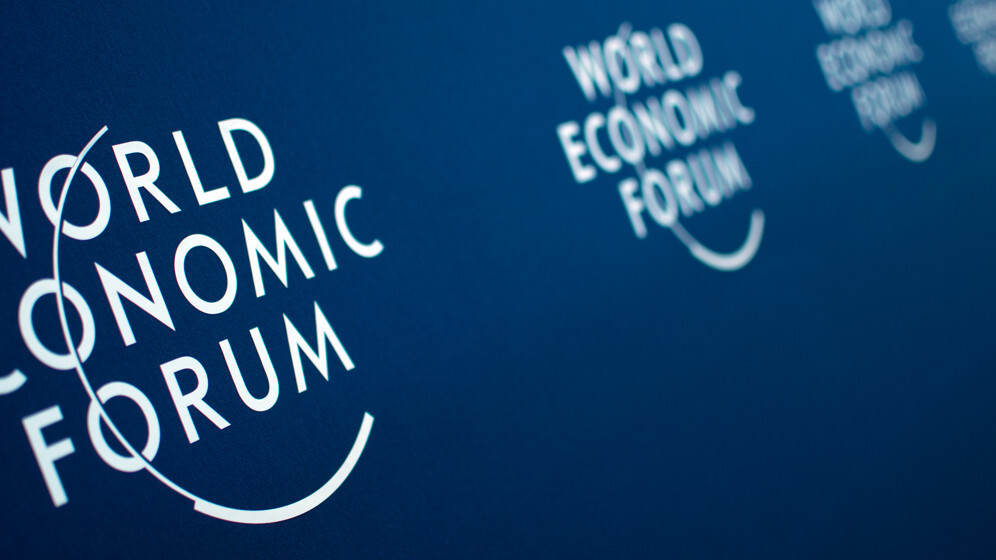
Editor’s note: This is a guest post by Igor Schwarzmann, co-founder of Third Wave, a Berlin based business consultancy for the digital world, and Adrian Rosenthal, Head of Digital and Social Media for MSL Group Germany, the PR network of Publicis Groupe.
Not too long ago, the World Economic Forum (WEF) was a rather secretive event in the snowy mountains of Davos, Switzerland, for the global elites, where heads of states mingled with industry leaders, thought-leading academics and influential journalists behind closed doors. Unfiltered impressions were as scarce as Dutch cheese in the Swiss Alps. What we
knew about Davos was transported to us via classical media outlets.
Davos in January is certainly still a sealed-off “miniature society,” where Merkel meets Cameron (almost 40 heads of state were invited), where Sean Parker throws parties attended by the likes of Marissa Mayer, Jeff Jarvis and Jimmy Wales, and where Brazilian novelist Paulo Coelho entertains his readers – via his Twitter stream.
While the WEF thus certainly remains an elitist gathering – you have to be invited by a member of the WEF to become an official participant, and Facebook competitions to win attendance have unfortunately not been conducted to our knowledge – the formerly closed doors have been opened a bit, thanks to social media.
How the WEF has digitalized Davos
The WEF has declared this year’s meeting to be the most digital to date. With the help of some of its partners, the WEF opened up a variety of channels to follow the event, sharing infographics to their almost 130,000 fans on Facebook and Google+ (more than 1.7 million followers) or using the Forum Blog and guest authors like WordPress founder Matt Mullenweg to drive traffic to their sites and start conversations. Key sessions and press conferences were also livestreamed on multiple channels and then put on YouTube.

The key element of the Forum’s social media activities, however, was clearly Twitter. The communications team handled the WEF’s Twitter feed, and with more than 1.8 million followers tweeting live from over 40 sessions and producing a constant stream of news, the hashtag #wef got into the global trending topics for the first time. According to numbers provided to us from the Forum, the official hashtag generated around 170,000 mentions during the Annual Meeting 2013, which resulted in almost 2 billion potential Twitter impressions. With weflive.com, WEF partner KPMG also built a hub collecting delegates’ tweets and featuring live infographics.
The turn towards a more digital Davos has also been sped up by the attendees themselves. “Davos 2013 has been the most transparent and inclusive annual meeting in the history of the Forum. And frankly, we would be mad not to tap into the potential of global leaders in technology, ICT innovation and startup culture or our own “technology pioneer” community to develop that even further,” says WEF communications specialist Georg Schmitt. As digital topics and questions about the future of the Internet have entered the agenda of the WEF, a different, younger and more tech-savvy breed of participants has become an integral part of the now always-on conversation at Davos.
The youngest participant was certainly a true digital native: 12-year-old Khadija Niazi of Lahore, Pakistan talked about how she uses MOOCs (massive open online courses) offered by institutions like Stanford University, the alma mater of Silicon Valley, to learn about topics such as astrobiology. Not that CEOs, politicians and academics haven’t adopted social media: Almost 30 percent of the 2,500 participants were active on Twitter and produced more than 20,000 tweets with the #wef hashtag. And while women accounted only for 17 percent of the delegates, they were responsible for more than a third of the social media activity at the WEF.
 2013 saw first attempts to let users participate directly in the Annual Meeting via questions on the Facebook page or Twitter chats, which is something the WEF social media team wants to encourage: “The idea of public goods is often discussed in Davos, and we’ve tried to match up to that digitally – on livestream, on video, in blog posts, and in status updates. The ‘Digital Davos’ user experience still has some way to go, but we hope this year it gave a sense of the meeting to everyone who couldn’t be present, and an opportunity for them to contribute to or critique the discussions,” concludes Adrian Monck, who heads the communications team of the WEF.
2013 saw first attempts to let users participate directly in the Annual Meeting via questions on the Facebook page or Twitter chats, which is something the WEF social media team wants to encourage: “The idea of public goods is often discussed in Davos, and we’ve tried to match up to that digitally – on livestream, on video, in blog posts, and in status updates. The ‘Digital Davos’ user experience still has some way to go, but we hope this year it gave a sense of the meeting to everyone who couldn’t be present, and an opportunity for them to contribute to or critique the discussions,” concludes Adrian Monck, who heads the communications team of the WEF.
While the extensive Twitter stream from Davos has certainly been the key platform both for participants and observers worldwide to engage and interact, it will be interesting to see how Adrian Monck and his team will further develop the social media activities and thus deepen the modes of participation at WEF meetings. But we might not have to wait one more year to see how digital topics will shape and evolve the agenda, according to Schmitt: “In June, the Forum’s Middle East summit will take place in Jordan. Two years after the Arab spring, social media and the blogosphere in particular are an essential space for the Forum if we want to live up to the idea of a multi-stakeholder platform in that region.”
Get the TNW newsletter
Get the most important tech news in your inbox each week.




